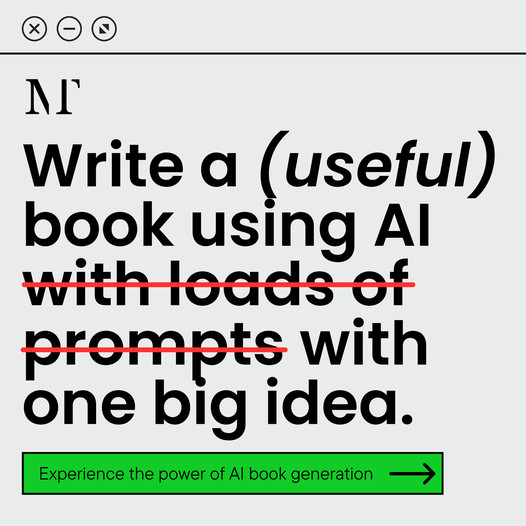Why Self-Editing is Essential
Self-editing is like the secret weapon in your writing toolkit. Grasping its importance can seriously up your writing game and make those final drafts shine like never before.
Importance of Self-Editing for Writers
Self-editing gives you the power to sharpen your words and thoughts, bringing out the best in your work. We writers sometimes get so chummy with our creations, it’s tough to spot where they fall short. But self-editing lets you step back and see your writing with fresh eyes, which is gold for any story, article, or creative adventure.
Here’s why self-editing matters:
| Aspect | Why It Matters |
|---|---|
| Clear Communication | Makes sure your ideas hit home with your readers. |
| Top-Notch Quality | Cranks up the overall quality of your words. |
| Be Your Own Editor | Gives you the chops to clean up without always leaning on others. |
| Boosts Confidence | Builds your belief in making your writing sparkle. |
Why Polishing Your Own Work Rocks
When you take the wheel and polish your own work, you get a bunch of perks beyond just tidying up a few grammar glitches. It boosts your technical writing chops and deepens your connection with your creation.
-
Better Writing Juju: Every time you edit, you flex those writing muscles! You’ll get savvier about structure, grammar, and choosing the right style.
-
Keeping that Cash in Your Pocket: Less need for outside editing means more cash stays with you, plus it saves you some precious time.
-
You’re the Boss of Your Story: By doing your own editing, you’re in the driver seat. You get to tweak and change things just the way you want ‘em without anyone else’s fingerprints on it.
-
Ready for Feedback Like a Pro: Tackling issues yourself first means when feedback comes, you’re ready to use it. You’ll focus more on the deeper suggestions and less on the nitty-gritty.
Want more handy writing advice? Peep our articles on beginner writing tips and writing advice for new authors. Self-editing isn’t just a chore; it’s a rite of passage that takes your writing craft up a notch.
Preparing for Self-Editing
Before you start slashing away at your work, a little bit of prep goes a long way. Trust us, you’ll thank yourself later.
Taking a Breather Before Editing
Ever try seeing the forest for the trees when you’re smack dab in the middle of it? Taking a break from your masterpiece lets you step back and see the whole picture. Here’s a quick rundown of how breaks can refresh your brain:
| Break Duration | Benefit |
|---|---|
| 1-2 Hours | Gives your mind a quick refresh. |
| 1 Day | Allows you to return with fresh eyes. |
| 1 Week | Offers deeper insights and a fresh perspective. |
Crafting the Perfect Editing Zone
Think of your space like a little editing sanctuary. You want it calm, bright, and cozy. Here are some things to keep in mind as you set up:
| Environment Factor | Considerations |
|---|---|
| Sound Level | Some silence or chill tunes can really help. |
| Lighting | Good lighting saves your eyes from strain. |
| Comfort | A comfy setup helps you keep at it longer. |
Handy Tools for Self-Editing
Imagine trying to cook a gourmet meal without the right equipment. Proper editing tools take your work to the next level:
| Tool Type | Examples |
|---|---|
| Writing Software | Microsoft Word, Google Docs |
| Grammar Checkers | Grammarly, Hemingway Editor |
| Plagiarism Checkers | Turnitin, Copyscape |
| Note-taking Apps | Evernote, OneNote |
These tools can really beef up your editing game and make life easier. Want more tips on polishing your skills? Check out these resources: how to improve writing skills and get some tips for editing your book.
 What Poetry Feels Like
What Poetry Feels LikeSteps to Self-Edit Your Writing
Let’s polish that write-up of yours until it shines! Here are three handy steps to make your self-editing as smooth as butter.
Step 1: Read Aloud
Hearing your words spoken is like holding up a mirror to your writing. It’s like a mini performance where you catch all those sneaky mistakes and hiccups:
| What’s Good About It? | Why Do It? |
|---|---|
| Smoother Sound | Spot if your sentences ramble or trip. |
| Error Hunter | Catch those typos and bad grammar. |
| Voice Check | Ensure your tone’s working its magic just right. |
Step 2: Check for Clarity and Consistency
You’ve read aloud, now let’s get down to the nitty-gritty of what you’re saying. Is it clear, consistent, and easy to digest?
- Clarity: Break down complex stuff. If you don’t need the big words, dump ’em.
- Consistency: Stick to the same vibe, tense, and angle to keep your readers on track.
Got a favorite phrase you always use? Make sure it pops up the same way each time. Need more help? Check out our beginner writing tips.
Step 3: Focus on Grammar and Punctuation
Let’s give grammar and punctuation some attention, shall we? Look out for those usual suspects:
| Watch Out For | What to Look For |
|---|---|
| Agree or Disagree | Make sure your subjects and verbs pair up right. |
| Comma Drama | Place ‘em properly to keep sentences from running wild. |
| Fragment Fix | Every sentence should stand on its own two feet with a subject and verb. |
While tools can lend a hand with this, trust your instincts for those tricky errors. Want more savvy strategies? Discover our own guide on tips for editing your book.
With these steps, you’re on the path to making your words pop just the way you want them to. Dive deeper into our other articles if you’re keen on picking up storytelling tricks and perfecting story outlines: how to write better stories and how to outline a story.
Amping Up Your Self-Editing Skills
If you want to boost your self-editing game, try creating your style handbook, grabbing insights from others, and learning from your own editing hiccups.
Creating Your Own Style Handbook
A style handbook is your ticket to consistency. It’s where you jot down your grammar and punctuation quirks, how you want things formatted, and your preferred writing vibe. With this personal cheat sheet, your writing stays sharp and well-put.
| Element | Things to Think About |
|---|---|
| Grammar | Decide what you like (Oxford comma, active vs. passive voice) |
| Punctuation | Set your rules for those exclamation points and quotes |
| Formatting | Pick fonts, headings, and spacing |
| Tone | Find your voice (formal, chill, etc.) |
Sticking to a style guide keeps your writing tight and coherent.
Getting Feedback from Folks
Feedback is like that friend who tells you spinach is in your teeth. Having someone else glance over your work can reveal stuff you’ve missed. Reach out to writing buddies, groups, or mentors to get the scoop on what’s working and what isn’t. When you ask for feedback, aim specific—like clarity or story flow.
| Feedback Source | What’s Good About It |
|---|---|
| Writing Groups | Get a mix of tips and a pat on the back |
| Mentors | Snag wisdom from those who’ve been there |
| Beta Readers | Hear from folks you’re writing for |
Diverse feedback widens your perspective and spotlights areas begging for tweaks. Check out our post on tips for editing your book to dig deeper into snagging and using feedback smartly.
Learning from Your Editing Adventures
Notice the usual suspects in your writing errors. Jotting down a checklist of these goofs will keep you vigilant when editing, and help nip them in the bud on future works.
| Common Oopsies | How to Fix ‘Em |
|---|---|
| Overused phrases | Swap ’em out or cut them |
| Weak verbs | Punch up with stronger action words |
| Wobbly tone | Check back with your style guide |
Taking note of your editing journeys helps you grow as a wordsmith. For more tricks to jazz up your writing, peek at our article on how to improve writing skills.
Grab hold of these methods to seriously level up your self-editing prowess, paving the way for slicker, more impactful storytelling.
Common Slip-ups to Dodge
Editing your own work is a big deal in writing. Lots of folks make the same goof-ups when they try to do it themselves. Spotting these blunders helps polish up your work and make it shine.
Missing Typos and Spelling Goofs
Super easy to skip over typos and misspelled words when you’re editing your stuff. These tiny slip-ups can make your work look unprofessional. Here’s how to catch those pesky errors:
| Tricks for Catching Boo-boos | Description |
|---|---|
| Take It Easy | Slow down and really look at your work. |
| Use Spell Check | Let your writing software’s spell check lend a hand. |
| Read Backwards | Go through your text backward to focus on the spelling. |
Repeating Yourself
Saying the same thing over and over can make your writing feel like a jumbled mess, leaving readers lost. Make sure to cut out any extra phrases or ideas that just take up space without adding anything new. Keep these in mind:
| Tips for Cutting Repetitions | Description |
|---|---|
| Check Every Paragraph | Look out for repeated info in your paragraphs. |
| Mix It Up with Synonyms | Use different words to keep things lively. |
| Trim Those Descriptions | Slash needless adjectives and adverbs. |
Speeding Up Editing
Most people think editing should be a breeze. But rushing can make you miss mistakes and leave your writing a bit off-key. Avoid this hiccup by trying:
| Tips for Slow and Steady Editing | Description |
|---|---|
| Block Off Time | Reserve certain times just for editing. |
| Edit Bits at a Time | Tackle editing in stages, like grammar first, then flow and structure. |
| Take a Breather | Step back for a bit to see your work with fresh eyes. |
Being aware of these common trip-ups can boost your editing game, helping you put out writing that truly impresses. For more handy editing wisdom, check out our article on editing tips for your book.
Finalizing Your Work
Alright, you’ve been through the self-editing ringer, and if your brain’s not mush just yet, it’s time to cross the t’s and dot the i’s. This part is all about making sure your work is shiny enough for the world to see. Let’s go through the final tweaks—proofreading, sprucing up the format, and knowing when to walk away.
Proofreading Your Edited Draft
Proofreading is the last check before your masterpiece is public-ready. It’s like doing a final pre-flight check so your words don’t crash and burn. You’re hunting down sneaky typos, grammar gremlins, and those weird formatting hiccups that somehow made it past editing. Try these tips:
| Tip | Description |
|---|---|
| Go Backwards | Yep, you read that right. Start at the end of your piece and move up. This helps you zero in on each word and sentence. Weird, but effective! |
| Make a Boo-Boo List | Get a list of usual suspects like pesky punctuation and those homophones that like to trip you up. |
| Listen Up | Fire up text-to-speech or read out loud. You tend to hear errors that your eyes skim right over. |
Formatting and Polishing Your Final Piece
Formatting is not just about making your text neat; it’s about making people want to actually read it. Here’s what to focus on:
| Element | Importance |
|---|---|
| Font Style | Stick with the classics like 12-point Times New Roman or Arial so no one’s struggling to read. |
| Spacing | Give your lines some room to breathe with 1.5 or double spacing, especially if you’re sharing your work. |
| Headings | Use clear headings to help readers navigate through the jungle of your thoughts. |
Double-check if you’ve got to stick to any fancy formatting guidelines like MLA or APA. You know the drill.
Knowing When to Stop Editing
The struggle of knowing when it’s done is real. Here’s how to figure out if you’re good to go:
| Indicator | Explanation |
|---|---|
| Feedback Incorporated | You took feedback from the Jim Halpert to your Dwight Schrute and made those changes. Awesome, time to wrap it up. |
| You’re Smiling | No, really. If you feel good about what you’ve got and think it’s on point, it’s ready. Confidence is key. |
| Over It? | After so many tweak sessions without any new errors, it’s probably the universe saying ‘enough already!’ |
Remember, too much tweaking turns into overthinking, and that just messes with your vibe. If you’re thirsting for more tips to polish your writing smarts, have a look at our writing advice for new authors.


 Grab my poetry book, 'we're all just wanderers in the end' Here
Grab my poetry book, 'we're all just wanderers in the end' Here AD: Your Book Finally Written...
AD: Your Book Finally Written...